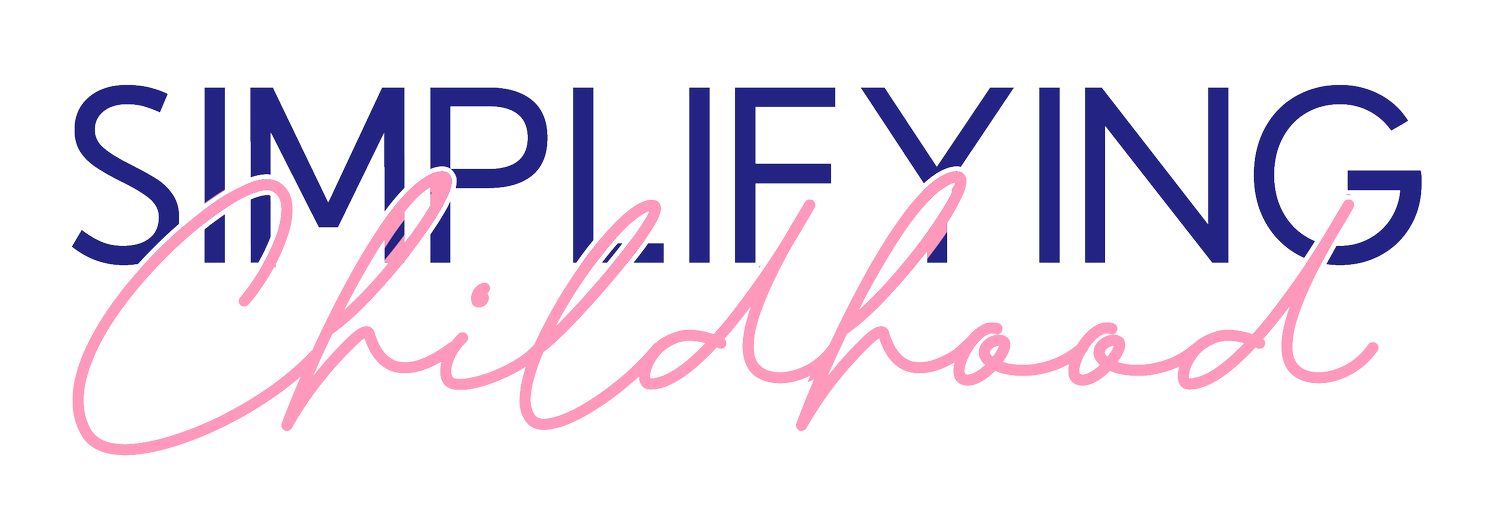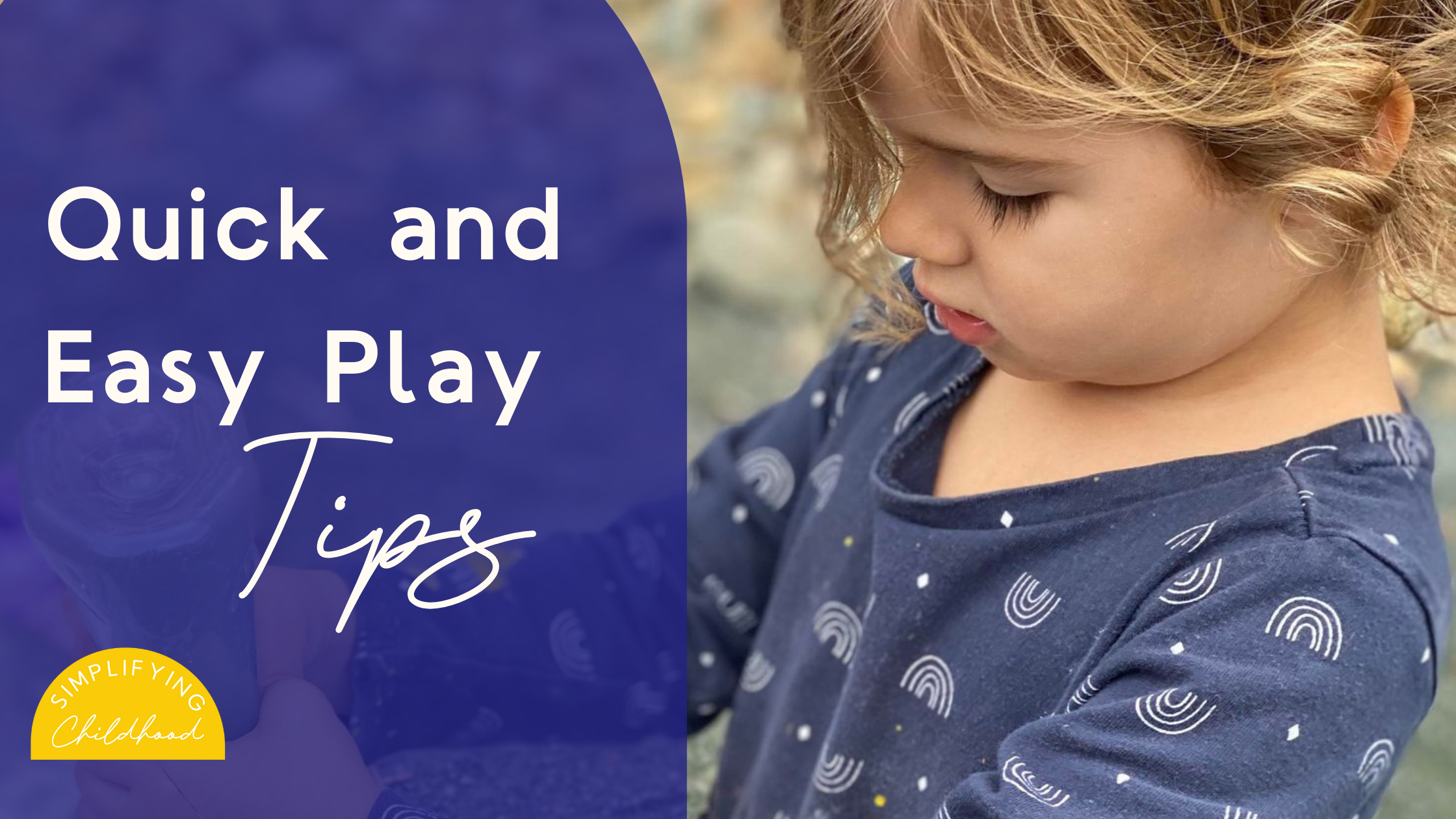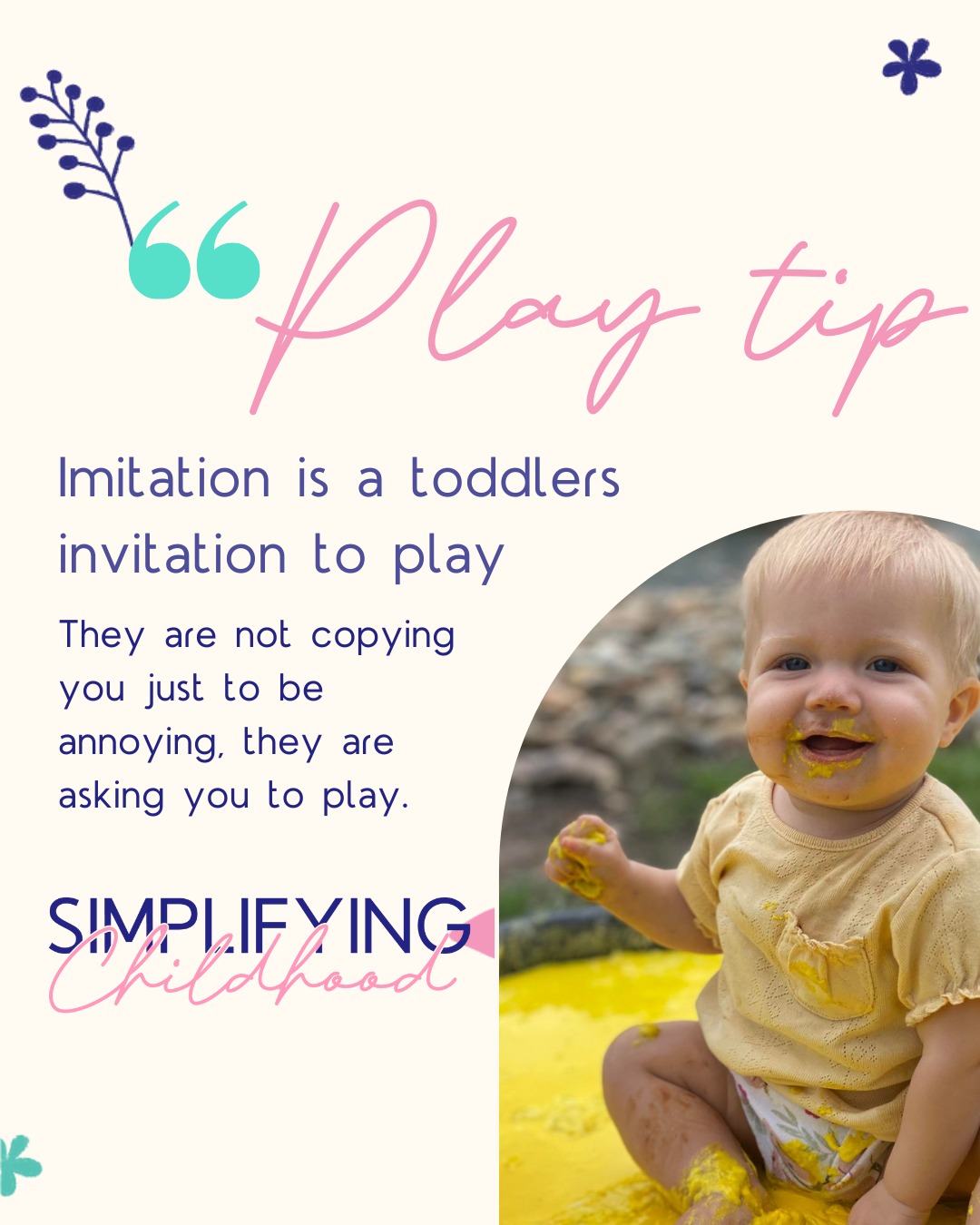Quick and Easy Play Tips
Play is an essential part of child development. Playing is a way children explore the world around them, learn about themselves, and understand others. It's also a lot of fun!
There are many different types of play activities that you can do with your children at home or outdoors: playing cards; reading books; drawing pictures; building with blocks/legos; creating collages; making puppets out of paper bags or old clothes - the list goes on! The possibilities are endless when it comes to creative ways for kids to use their imaginations while having fun doing so.
This is a collection of play ideas and tips to bring more play into your homes without adding to the to-do list that never ends.
Imitation is a toddler’s invitation to play
You know the “stop copying me game” has this delight hit your home?
What if we changed our mindset and didn’t see this as annoying? (okay it is a little)
What if we saw it as a invitation for connection?
Sometimes simply flipping how we view our children’s behaviour can dramatic alter our response and their reaction.
2. Pretend you are David Attenborough
The more you talk the more they learn - pretend you’re narrating your life
Narrate what you are doing through the day or when emotions run high, and explain what you see.
I know it feels like you are talking to a brick wall but I promise they are listening
3. Multiple Play Schemas
Lets get honest for a minute -are you reading this while watching TV? ... Just me?
The same is that our children don't learn one thing at a time, they flitter through learning lots of little pieces at once ... kinda like a jigsaw they are finding different pieces all at once.
Why does this matter?
Well, just because you observed that your child is exploring the trajectory schema (throwing EVERYTHING off the high chair) doesn't mean that you can not put out toys or materials for other schemas.
4. All behaviour is communication
Children don’t always have the words, so they jump, run, hit, scream, sing, dance, cry - it’s all telling us something
Children are developing their language to describe their feelings, thoughts and emotions, and until then they communicate physically
Why is this important?
- when we look at behaviour as communication we don't try to rush in and change in rather we focus on understanding the message
- when we see behaviour in this way it focuses our attention to our child and their environment rather than looking at if it is socially acceptable
- when we see things as communication it isn't then personal nor 'bad' or 'naughty'
This mindset shift can have so much power for working with toddlers.
What behaviour does your child do to show their feelings?
My favourite is when Ninja has to jump when she is excited, or she roars when she is frustrated.





